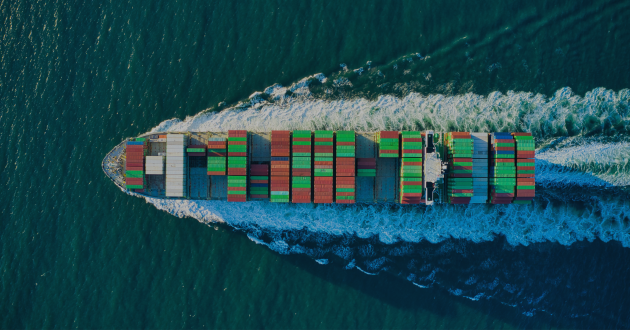What is the EU Deforestation Regulation?
On June 29, 2023, the European Union’s new deforestation regulation (EUDR) entered into force. The EUDR ensures that seven commodity products that are major drivers of deforestation — palm oil, cattle, soy, coffee, cocoa, timber, rubber, and products derived from these commodities (such as beef, furniture, or chocolate) — will no longer be sold in the EU if sourced from areas affected by deforestation or forest degradation practices. Deforestation and degradation take place mainly in the three major forest basins of the Amazon (South America), Congo (Central Africa), and Southeast Asia.
This regulation on deforestation-free products repeals the EU Timber Regulation, which did not go as far to regulate illegal timber.
The law applies to both operators and traders. Operators are those who, in the course of a commercial activity, first place a relevant product on the EU market or export these products. Traders buy or sell relevant items that are already on the market.
In December 2024, the EU granted a 12-month additional phasing-in period for the regulation. The law is applicable to medium and large operators and traders on December 30, 2025 and to small and medium-sized enterprises (SMEs) on June 30, 2026.
The European Commission will publish country risk benchmarking determinations by June 30, 2025. Products sourced from low-risk areas will have simplified due diligence requirements, while those from high-risk areas will be subject to increased scrutiny.
>> Hear from experts on what you can do to prepare for the EUDR <<
Why is the EUDR important?
The EU lists their goals for the EUDR as follows:
- Help ensure that the listed products Europeans buy, use, and consume do not contribute to deforestation and forest degradation in the EU and globally.
- Reduce carbon emissions caused by EU consumption and production of the relevant commodities by at least 32 million metric tonnes per year.
- Address all deforestation driven by agricultural expansion to produce the commodities in the scope of the regulation, as well as forest degradation.
By promoting the use of ‘deforestation-free’ products and reducing the EU’s impact on global deforestation and forest degradation, the new regulation is expected to bring down greenhouse gas emissions and biodiversity loss.
Agricultural production is by far the main driver of global deforestation, accounting for 80 percent of total forest conversion. The growing demand for agricultural commodities internationally continues to drive agricultural land conversion. The EU alone is responsible for importing products that account for approximately 16 percent of deforestation associated with global trade, resulting in 203,000 hectares of cleared forests and 116 million tonnes of carbon dioxide released into the atmosphere, according to the World Wildlife Foundation.
The new regulation sets strong mandatory due diligence rules for companies that want to place relevant products on the EU market or export them. Operators and traders will have to prove that the products are both deforestation-free (produced on land that was not subject to deforestation after December 31, 2020) and legal (compliant with all relevant applicable laws in force in the country of production).
The exercise of due diligence requires organizations to collect information, assess risk, and mitigate risk. Non-SME organizations must submit annual due diligence statements regarding their supply chains after December 30, 2026.
Non-compliance with the regulation can result in corrective actions, including preventing the product from being placed on the market or a recall of the product. Penalties may include fines of a maximum of at least 4 percent of EU turnover and 12 months’ exclusion from public procurement and funding.
>> Discover how to identify high-risk exporters of timber and other deforestation-linked commodities <<
How can you ensure you’re in compliance with the EUDR?
To prepare for the upcoming deadlines, manufacturers and downstream buyers of the regulated products that wish to avoid sourcing deforestation-linked commodities will need to treat their imports with extra scrutiny — a task that is easier said than done. The complexity of supply chains for commodities such as timber can make it difficult to trace a product’s chain of custody back to the point of origin.
Sayari helps organizations trace a product’s chain of custody. The Sayari solution integrates and analyzes publicly available information from a variety of global sources, including real trade data, to shed light on the ownership, operations, and risk exposure of companies across supply chains.
Sayari’s data and tools let users harness public records from around the world to investigate and adjudicate many forms of supply chain risk. Sayari collects information on more than 730 million companies in more than 250 jurisdictions, including company-level trade records from more than 70 countries across the Americas, Europe, Africa, and Asia.
Specifically, Sayari maps an organization’s sub-tier supply chain for a comprehensive picture of inputs and their potential exposure to deforestation risk. Sayari’s deforestation risk factors identify entities that are associated with high risk under the EUDR, based on country measures of commodity-driven deforestation, biodiversity loss, and governance. (Note: Countries identified as high-risk by Sayari may not match with those the EU will specify by June 30, 2025. Sayari will be updating these risk flags accordingly once the benchmark data is released.)
Watch our webinar, Understanding and Preparing for the European Deforestation Regulation (EUDR), for a discussion of the provisions and impact of the regulation and learn how you can prepare your organization to meet the due diligence requirements.



